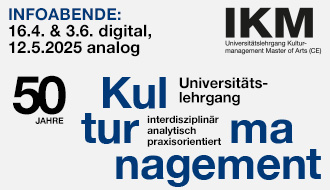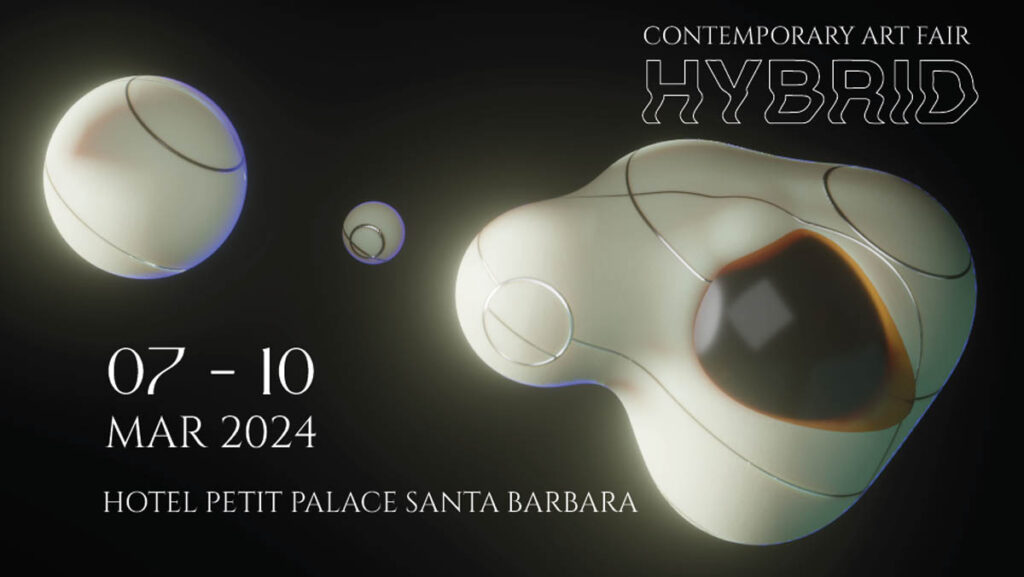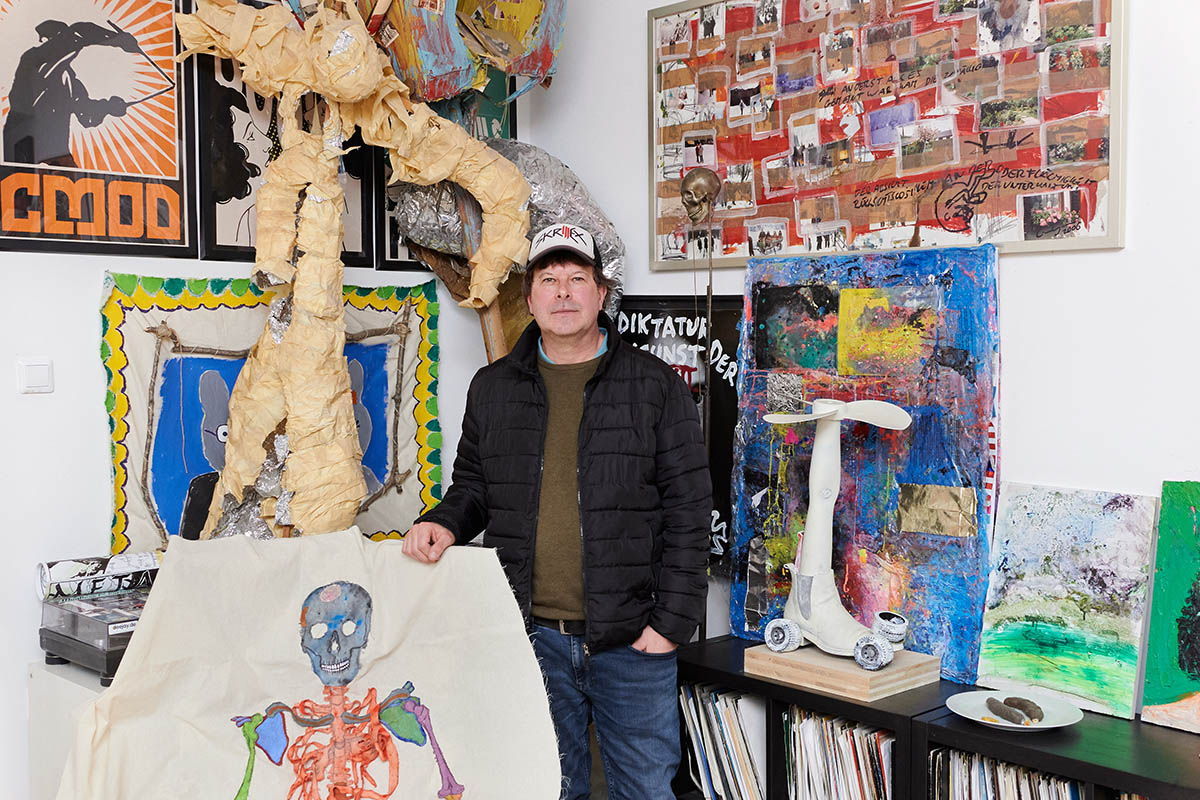
In recent years, he has embarked on a compelling journey, collaborating closely with artists to curate group exhibitions. He always kept his ambition: to foster connections among artists from diverse corners of the world, bridging disparate artistic groups and perspectives with each curated showcase.
What is your background, and how did you start collecting art?
I first studied business and administration, then later art history, at the University of Vienna. When I was younger, I was a DJ. I was performing in FLEX, or Arena, and it was an era of drum and bass. It was a pleasure to play along with the very well-known British DJs. I was also a musician and a drummer; I played guitar as well, and I was a part of several bands. Then later, as a bike messenger for one company in the early 2000s, I started seeing on the streets all of these cartons by Christian Eisenberger, and I started collecting them. I was very enthusiastic about art in public spaces, street art, and graffiti. And this was my first connection with the art world and collecting art.
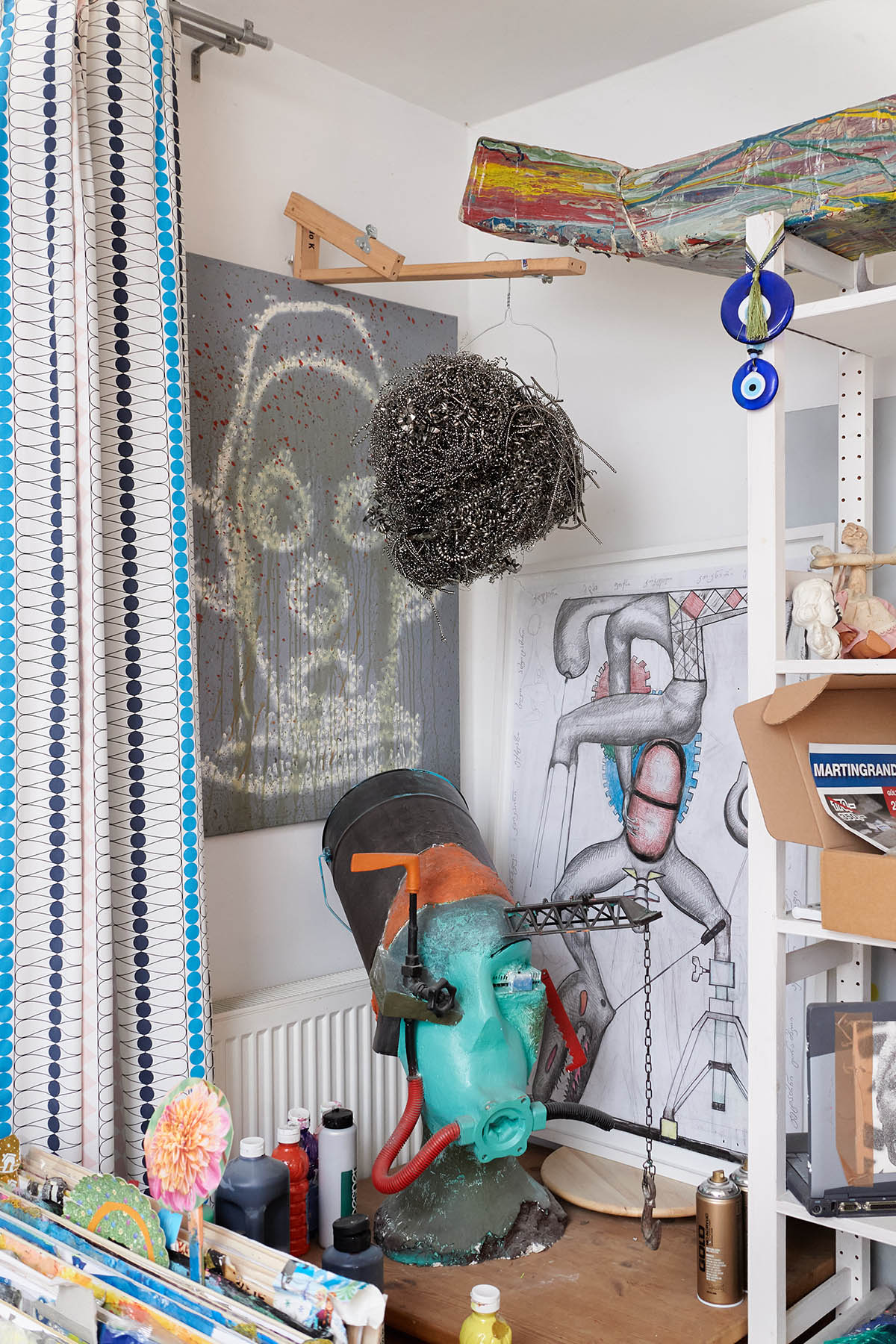
When you saw Eisenberger’s works on the street and started collecting them, did you know it was his work? If not, how did you get to know from whom the works you were finding on the street?
I didn’t know by whom the works were; I just collected them, and it once happened at Karlsplatz that the guy with a bike saw me collecting the works and asked me what I was doing. And I said I was collecting this art because I liked it and because I think this artist will be very famous in the future. The guy introduced himself as a friend from Christian, and later I found out it was the artist himself. Later, we became friends, and I visited him at his studio party. At one of the parties, he created a portrait of me. He painted live in front of everyone; he used a lot of colors and ketchup; he wrapped it and placed it in a microwave; he grilled the painting for maybe 5 minutes; and then he unwrapped it. And the result is now framed and in my collection.
You mentioned graffiti and street art as your big interests in the beginning.
In those times, there were cool graffiti artists like Keramik, Busk, Nychos, and others. There was one gallery in the 7th district here in Vienna that doesn’t exist anymore, and in this gallery, graffiti artists and street artists were presented, I bought a lot of art there; it was not expensive, and it was not hard to start a collection. You could buy work there for 50, 100, or 30 euros. I didn’t have a lot of them at that time because I was just a bike messenger so I couldn’t afford so many pieces, but fortunately, I bought some of them.
At which moment did you start studying Art History, and how were these years looking?
Then I was self-employed, and I had started my own company, and all of a sudden I didn’t have time for art. I was working 12 hours, 6 days per week, and no time was left for my passion. I lost interest in art, unfortunately. Then, when I sold the company and restarted the art thing, I started to study art history. And I decided to promote, support, and work with artists and concentrate on it. I knew that theory was important to turn into practical success, so I started to study and express myself in a better way. This was my intention, and all of that paid off later.
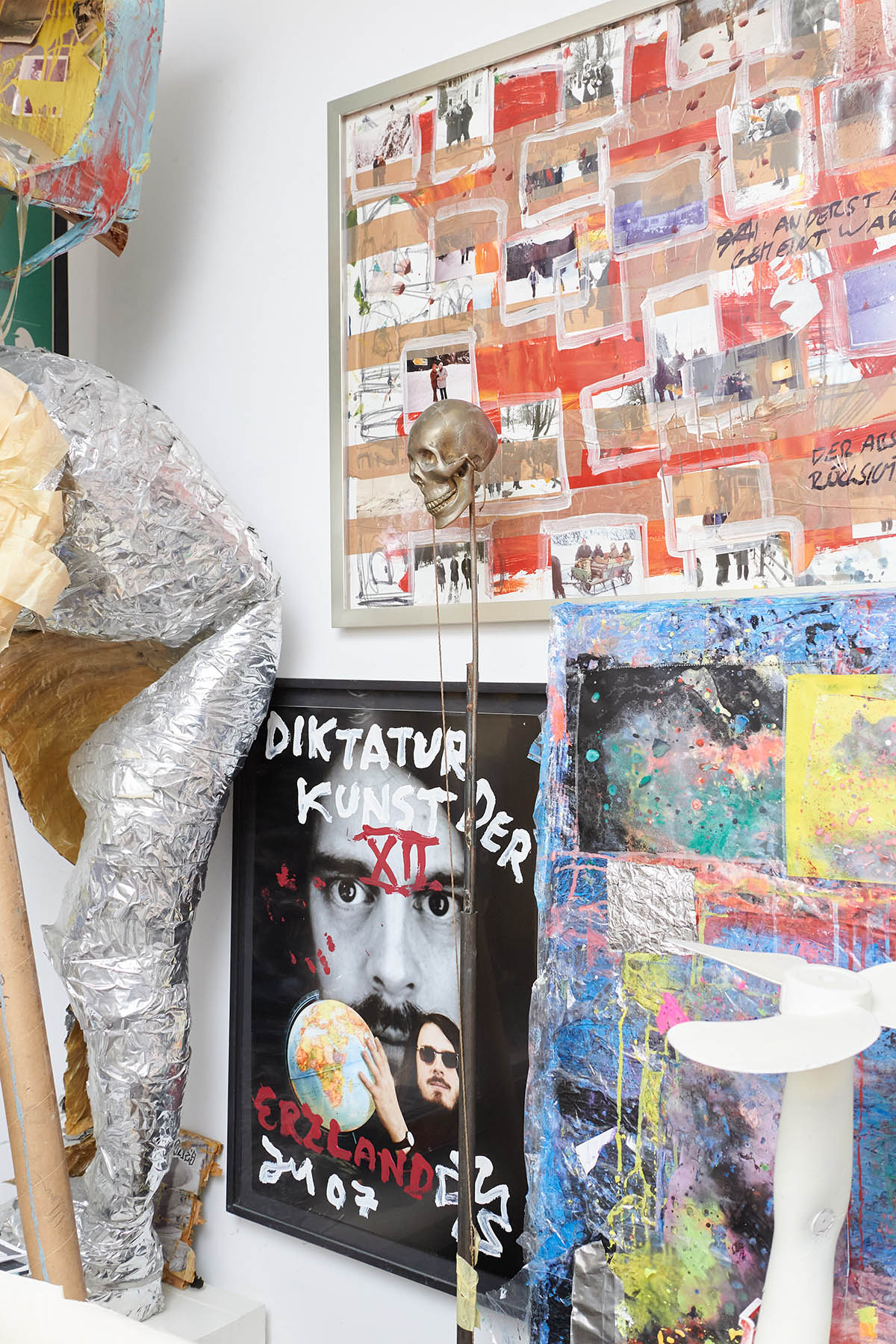
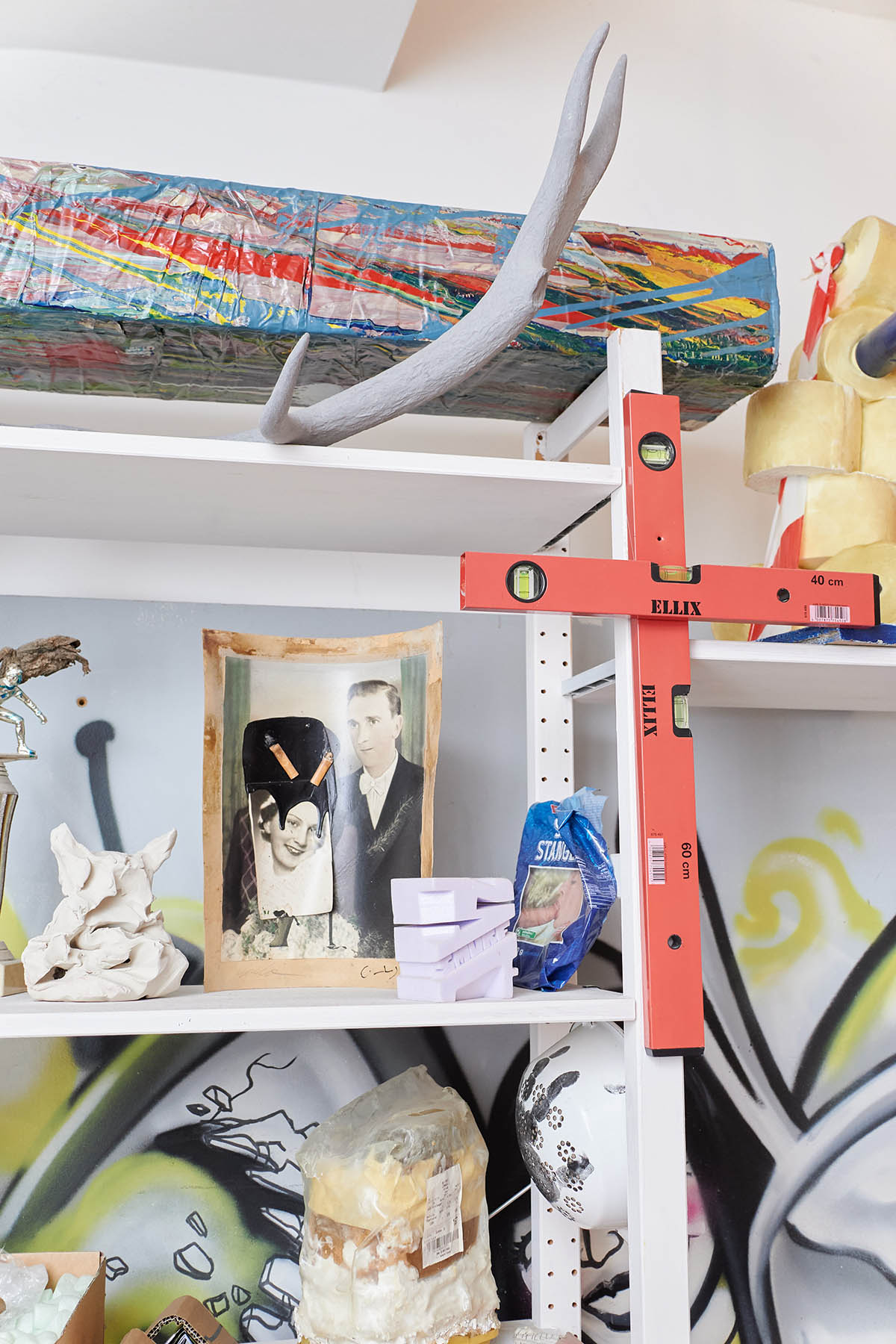
When you started studying art history, you started being involved and surrounded by art that is exhibited in institutions and galleries. How have these changes affected your collection and your way of perceiving art?
My interest in street art was lost because it became urban art and was sometimes a bit cheesy. There was no mystery or secret around it anymore. In those times, I started going more to galleries and museums, and I met new artists. For example, in those times, I met Begi Guggenheim, who is a good sculptor, and I also have pieces in my collection. So I went more to the galleries, and I started collecting art exhibited there.
Do you remember the first piece you bought from some institution?
It was the one from Eisenberger. I bought it in a Salzburg gallery that no longer exists. It was a painting of a clown with a hanging bowl in front of his face. So more of a painting installation. Then I went to the gallery Krinzinger and bought some artwork there.

You have spent the last two decades working with the artist and collecting art. How important is your relationship with the artist? Before collecting a piece from someone, are you researching them, or can you also buy a work without knowing the artist before?
Normally, I know all the artists in person, and I am invited to visit their studios, and then maybe we do an exhibition together. And then, in the end, I almost always buy at least one artwork after our collaboration. My interests are shifting all the time, as are all the new topics artists are working on. Like gender art, postcolonial aspects. So I also always look for new artists, the ones that are also a bit conceptual and have themes that are emerging in society. That is why my collection is very diverse. I have works from a lot of young artists, as well as artworks from artists of all genders. I am often visiting Die Angewandte and the Academy of Fine Arts Vienna here in Vienna, and I am getting in touch with art students as well.
How important is the aesthetic part of the artwork you want to have in your collection to you?
The aesthetic part of the work is no longer so important to me. I prefer the content of the work. Of course, if the artwork is beautiful, it is not a mistake, but I appreciate the content. But I am also not restrictive. I enjoy all the mediums I have in my collection: paintings, sculptures in different scales, prints, drawings, photography, and one video animation artwork that is still in the process of becoming part of the collection. I also have very small objects in the collection, which I enjoy. Mushroom made out of ceramics, or noodle sculpture. I also love tiny objects, so for me, it is not the rule to represent myself through art but to work with artists, which is the main focus at the moment.
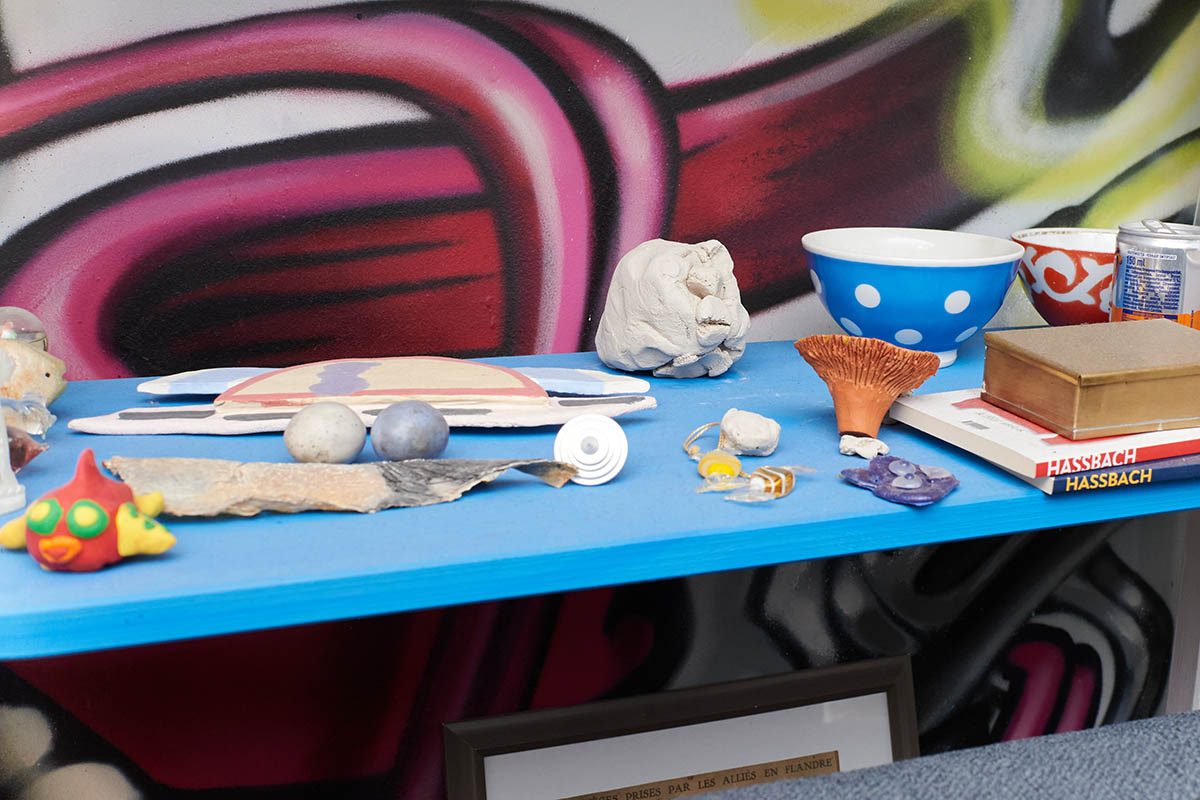
Do you know about other collectors and their connections to the young art scene?
Sadly, very few collectors buy young art, and there should be more collectors like me who are interested in artists younger than themselves. This is a huge topic in collecting; a lot of collectors are buying artists who are older than them, or often artists who have already died. They are more interested in the investment part of the collection.
The curatorial position you have in projects you do in group exhibition contexts is very interesting. What are the relations between artists who might not know each other and place the works in new contexts in the exhibition?
In pandemic times, I started a website that showcases my collection and the projects I am doing. And after the pandemic, I had the opportunity to make my first exhibition. To bring together different bubbles is one of my goals because I see that there are often exhibitions with the same group of artists, and often male artists, which I criticize. Also, bringing international artists to Vienna is a goal, and to bring artists of different generations, nations, and genders.
How is the idea for the exhibition developing? What comes first, the concept or the exhibitors you have in mind?
It usually starts with the text, the topic, and the headline, and in both cases, I cooperate with a friend who helps me formulate my thoughts and write a good text. Then I think about the artist. The social aspect of my work is also very important because new connections and new people are always welcome.
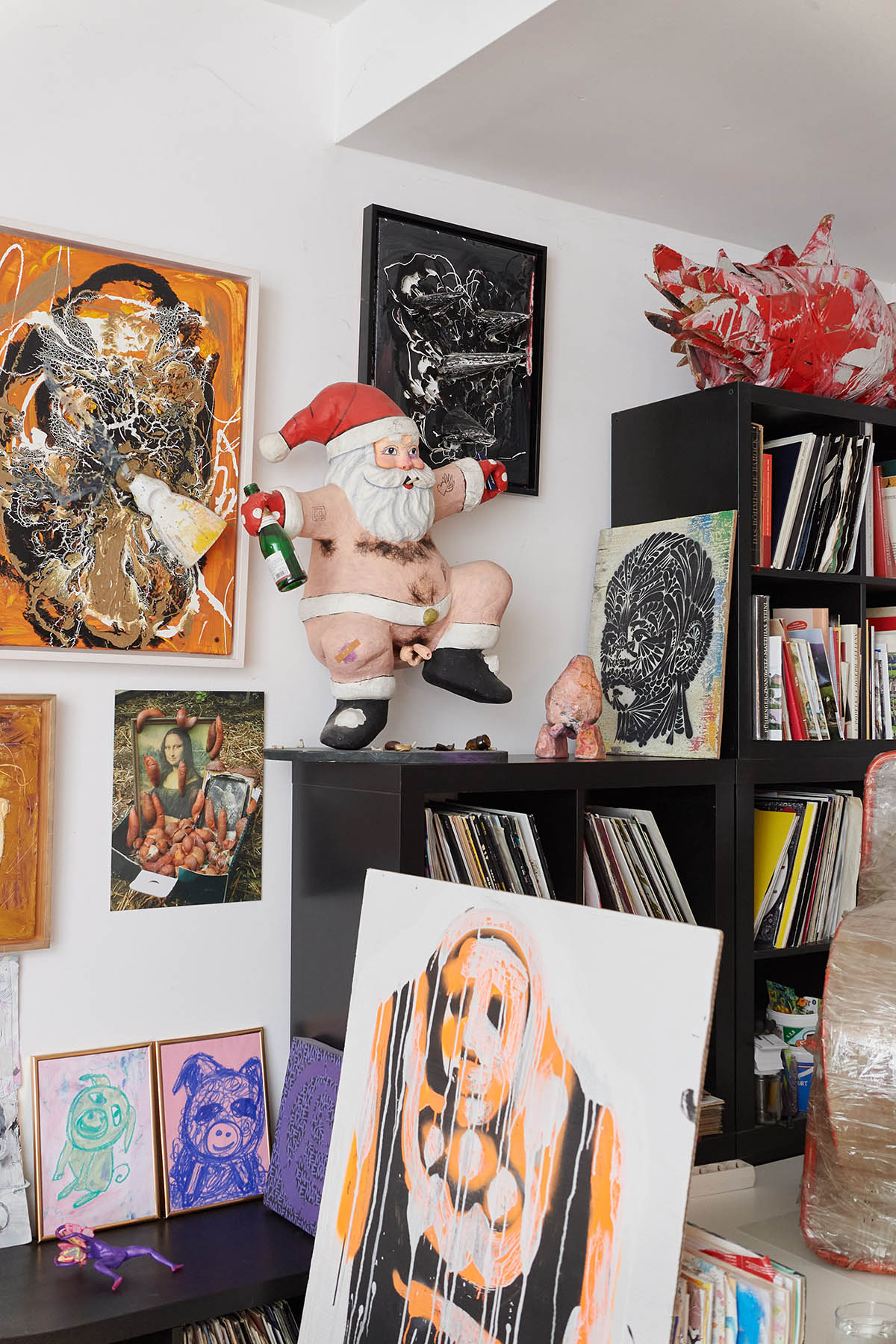
Do you have an idea of how many works you have in your collection, and do you keep everything listed in some form?
Maybe around five hundred, but it is only an estimation. Not all of the artworks are expensive; at the moment, I am not buying expensive artworks; I have some of them already. But anyway, I am not collecting because of the capital or economic side of it; this is not a priority. I have no intention of reselling my work.
At the moment, is there some artwork on your “wish list” that you would love to collect?
There is an interesting story about the Advent Wreath, a sculpture by Martin Grandits that I kind of waited for and thought about a year before I bought it. I also invited him, with that work, to be part of the exhibition AKTUELLE POSITIONEN SKULPTUR WIEN 2023, which I did earlier with Julia Harrauer. There would be many other artworks that I would love to have. There are also a lot of works by female artists. I already have in my collection a couple of works from Margareta Klose; I found her to be a very impressive artist, and one of her works is a doughnut, a sculpture you can sit on. She made it as a performance intervention in public space, Dialogs on Doughnuts. This artwork is in my living room, and I found it very interesting when the works could also be used every day, so I have somewhere to sit or a lamp!
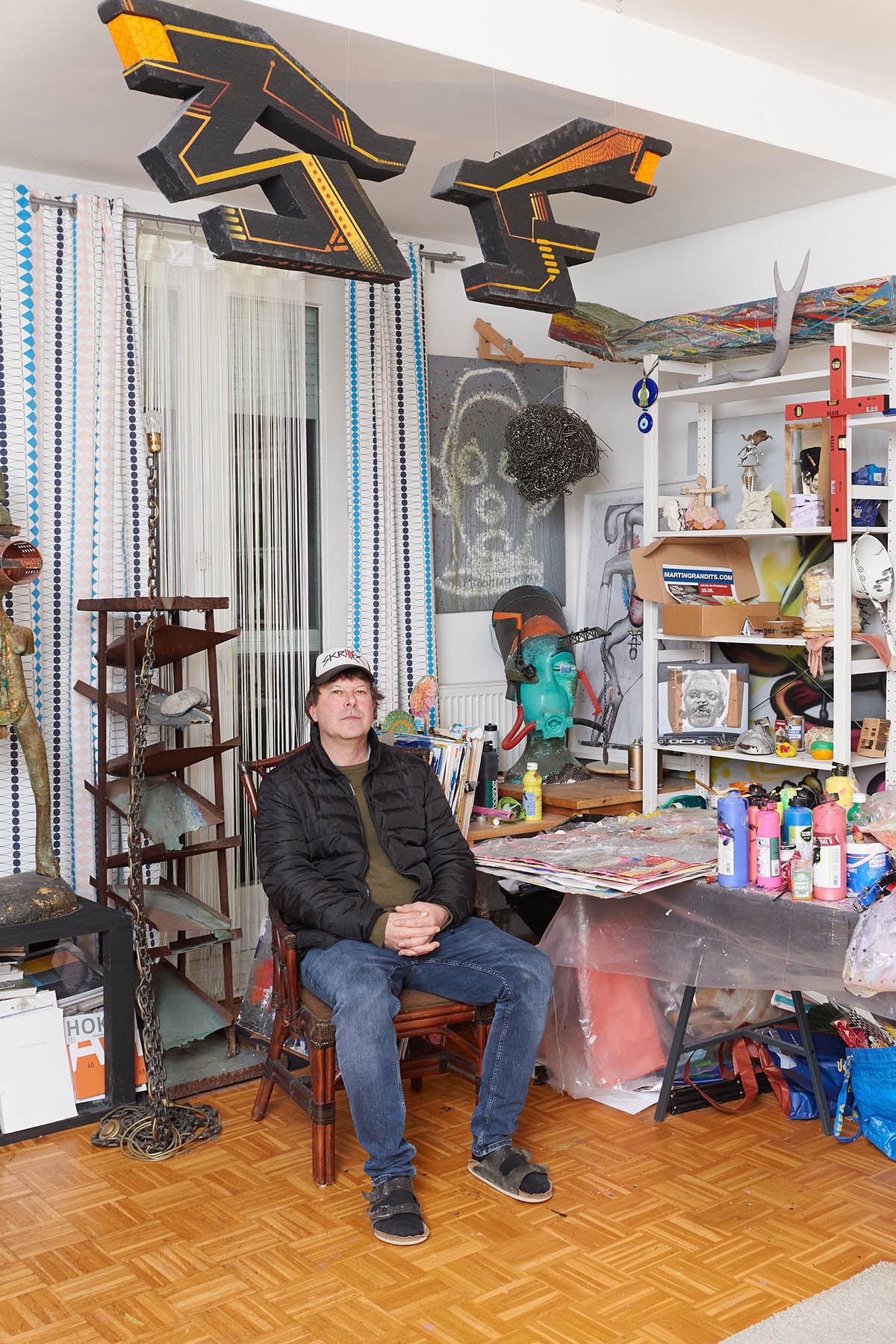
There is a project you are doing in Bratislava this January: the exhibition at the Austrian Embassy-Cultural Forum in Slovakia. How did it come to the idea of bringing the art and artificial intelligence topics together in one show?
It is a very important project for me. Luckily, last year I met at the university festival students from Die Angewandte: Anna Pelz, Moritz Wildburger, and Lukas Lex. They showed a very critical video and newspaper article about AI that I am excited to show. I got in contact with the Austrian Embassy in Bratislava, and I applied for a project. At the moment, science and technology combined with art are very important for Austrian culture. The other group of artists in the exhibition will exhibit the sculpture that is flying up in the air but with a technical innovation. However there is one artist in the exhibition who does not like AI at all, and he is working on the phenomenological level of human creativity vs. AI in an analog way. I am looking forward.
Is there something else you collect next to art?
Vinyl records, I have thousands of them, I guess, and then mushrooms and fruits as well to make jam out of it.
Art Collection Schlichtner – www.artcoas.com



